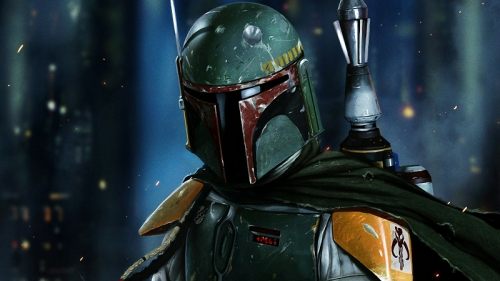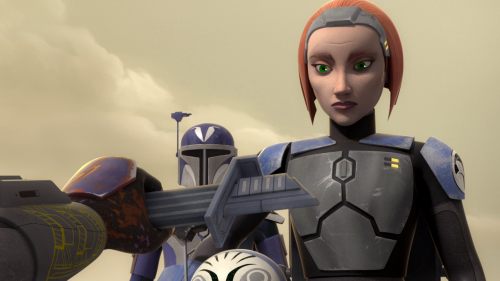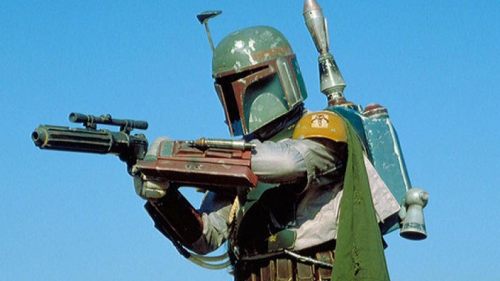Let’s Talk About ROGUE ONE’s Most Unsettling Cameo
SPOILERS AHEAD!
Regardless of what you thought of Rogue One: A Star Wars Story, even the most sycophantic fan would find it hard to applaud as the credits rolled, thanks to a final shot that surely ranks as the worst in the franchise. The shot in question is of Princess Leia, digitally de-aged into a whole-cloth CGI model. In concept, the shot is an overzealous wink to established canon; in execution, it centres post-film discussion on embarrassing digital doubles.
Leia’s only in one shot. Grand Moff Tarkin, however, is a fully-fledged supporting character. The boss of the Death Star was always going to be in Rogue One; the only question was how Lucasfilm would depict him. Would they recast the role, with someone inevitably lacking original actor Peter Cushing’s uniquely gaunt features? Put an actor in makeup, as with Wayne Pygram in Revenge of the Sith? Sadly, the means they selected - a distracting CGI double by Industrial Light & Magic - wasn’t the Grand Moff fans were looking for.
Many have invoked the spectre of Final Fantasy: Spirits Within when describing the digital Cushing. But we’ve never seen a computer-generated human being as realistic as Rogue One’s Tarkin. In stills, the illusion would be nearly flawless. I’ve even spoken to people who saw the film and didn’t realise Tarkin was a CGI creation, which frankly astounds me. However impressive the effects quality, it still bears the hallmarks of CGI, and though one does get somewhat used to Digital Tarkin, he never fully escapes the Uncanny Valley.
But that’s not the only reason Digital Tarkin is so off-putting. Peter Cushing died in 1994, and that raises some unsettling dilemmas.
Cushing’s digital resurrection feels, somewhat appropriately, like a weapons test. This is different to digital de-ageing, as in Tron Legacy and the Marvel films, where the performance is still fundamentally driven by the actor in question. And it’s different from Marlon Brando in Superman Returns, or Richard Burton in the War of the Worlds stage musical, which recreated earlier performances verbatim. This is the puppeteering of a deceased actor’s body and face by an altogether different person - in this case, English actor Guy Henry. Henry, who played Tarkin on set, has a similarly narrow face to Cushing, and could surely have performed in his own skin. But ILM thought differently, and now the window to digital resurrection, cracked ajar by Fast & Furious 7, has been flung wide open - likely permanently.
One issue this raises is that of likeness rights. California has a law that grants postmortem right of publicity for 70 years after an individual’s death, but Cushing, having died in the UK, isn’t covered by it. Lucasfilm secured his estate’s permission anyway, putting two citations in Rogue One’s closing credits. Variety even reports that Cushing’s former secretary and current estate manager was impressed and emotionally affected by the results, saying that “whoever put it together were absolutely fantastic.” So there’s no rights dispute here - but it still sits uncomfortably.
A thornier problem, one that’s more ethical than legal, involves passing one actor’s work off as another’s. I'm sure Guy Henry gave a solid performance, but he doesn’t appear in the movie. He won’t even get attention, as Andy Serkis frequently does, for creating a new and unique character - or even a new take on an old one. Rather, he was hired to impersonate Peter Cushing, and to channel that impersonation through a photorealistic replica of the deceased actor.
Does Henry’s performance reflect how Cushing would have approached the role? We’re meant to believe it does. Otherwise, why create the double? But Rogue One’s Tarkin is merely an imitation filtered through a facsimile. We see Peter Cushing, yet none of Cushing’s personal creative process was involved in building that performance. To me, that feels dishonest.
Looking forward, it’s hard to tell what the ramifications of Digital Cushing are. Luckily, the process is exorbitantly expensive, meaning it won’t be approached without due care and permission. But what happens if digital doubles somehow become more affordable (admittedly unlikely, given the human-hours required to build them)? Did Mon Mothma escape the CGI treatment solely because Genevieve O’Reilly played her in the prequels? Alden Ehrenreich has been cast as a young Han Solo, but would Lucasfilm just digitally de-age Harrison Ford if they could afford to do it at that scale? And will we ever see Guy Henry’s Tarkin?
“OMG, it looks so fake” is absolutely at the bottom of the list of issues raised by Rogue One’s visual effects. ILM managed to fool at least a few audience members with its fake Peter Cushing. Simultaneously inconspicuous and ostentatious, it’s a bold VFX move with big implications for the future. Who knows what happens next?



